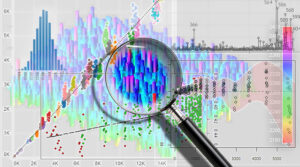Most state governments in Australia have allowed the greyhound industry to self-regulate.
- This means commercial industry racing bodies release little data about what happens to their greyhounds.
- Worst of all, Greyhound Racing South Australia (a commercial racing body) is even immune to freedom of information requests.
This is why CPG collates data from racing stewards’ reports, FastTrack (the racing industry’s database for punters) and eTrac (the NSW regulator’s database) to produce a national ongoing record of on-track deaths and injuries: 2024, 2023, 2022, 2021, 2020.
Clearly, if the racing industry had nothing to hide, it would release animal welfare data freely on a quarterly basis like these lifecycle records. Also, the industry’s peak body – Greyhounds Australasia – would collate such data from each state and release similar national statistics, but it does not do so.
This is one of many reasons why the RSPCA recommends –
- Systems must be implemented to ensure the robustness and transparency of the data gathered (e.g., independent auditing and regular inspections rather than a reliance on self-reporting).
- Comprehensive data on lifecycle (birth to death) records and injury statistics must be collected and published (this should be mandatory).
To this end, CPG exposed the increasing number of greyhounds removed from Victorian racing tracks and killed not long after they suffered serious injuries – ABC online news, MPs call for greyhound racing inquiry as advocates reveal dozens of deaths off-track, Harrison Tippet and Rachel Clayton.
Case Studies.
 Case study – NSW – missing track standards performance data
Case study – NSW – missing track standards performance data
May 26, 2024 – Sunday Telegraph, Sydney (NSW), Call for dog safety answers, Annette Sharp – Greyhound advocates are calling for the NSW government to release data showing how a $30m government grant earmarked for the improvement of industry safety has made racing safer for dogs.
- In NSW, the commercial racing body Greyhound Racing NSW (GRNSW) is responsible for track standards. These cover racecourse design and construction. Yet, GRNSW releases no quarterly or annual data on which tracks currently meet the standards and which do not.
- This is despite the fact that $30M of taxpayers’ money is being used to upgrade these tracks. See here for NSW tracks that have benefited from this program.
- The NSW Government committed $30 million to assist Greyhound Racing NSW and its clubs upgrade greyhound racetrack facilities to make them “safer for greyhounds”.
- The NSW Government has not released any data on pre- and post-upgrade injuries and deaths per track, so it’s not possible so far to know what ‘safer outcomes’ have been achieved for racing greyhounds in NSW.
 Case study – Victoria – FOI necessary to get welfare data under self-regulation
Case study – Victoria – FOI necessary to get welfare data under self-regulation- Victoria is one of the two largest dog racing states in Australia – NSW being the other.
- Here is a typical, unhelpful FOI response from the commercial dog racing body Greyhound Racing Victoria (GRV).
- If GRV has nothing to hide, it would release data freely.
- Meanwhile, it makes unsupported claims about observing high animal welfare standards such as – “GRV is committed to using best-practice integrity and animal welfare approaches“.
- This is especially absurd given GRV reduced its rehoming requirements in 2023, so industry participants don’t have to make the same effort rehome ex-racing greyhounds and can kill them more readily instead.
 Case study – Tasmania – incompetent anti-doping data
Case study – Tasmania – incompetent anti-doping data- CPG’s report on Tasmanian dog racing regulation reveals a shockingly lax approach to anti-doping across all three codes of racing covered by the Office of Racing Integrity (ORI), the government regulator responsible for greyhound, thoroughbred and harness racing across the state.
- According to annual reporting on ORI’s performance, there no distinction between swabs taken in-competition and out-of-competition. ORI also does not report on the number of samples taken within individual codes of racing. Instead, ORI’s reporting displays the collective data for swabs taken from horses, hounds, and even humans.
- The absence of clear data indicates a serious lack of oversight with regard to doping controls in Tasmania. If ORI are relying solely on in-competition samples, the detected doping reported is a gross underestimation of the real doping rate. You can read more about this here.
- Tasracing, the commercial dog racing body, releases no doping data whatsoever.
 Case study – South Australia – dodgy rehoming data under self-regulation
Case study – South Australia – dodgy rehoming data under self-regulation- The RSPCA SA has long called for the SA Government to rectify the fact that Greyhound Racing SA (GRSA) – the commercial state racing body – is immune to FOI. Both major parties have failed to take action when in power in SA.
- Consequently, GRSA’s GAP program makes questionable rehoming claims that cannot be verified independently.
- GAP SA would have the public and the media believe it rehomed 489 dogs in 2021/22 to SA’s estimated population of 1.7M, while NSW’s population is c8.3M and GAP NSW rehomed only 301 dogs in the same period – see p27 here to compare rehoming figures per state.
- Either GAP NSW should be examining GAP SA’s more efficient rehoming methods, or GAP SA is fudging its figures, the way it has previously according to the RSPCA. Hopefully, the recent inquiry into SA dog racing industry will result in change to GRSA’s lack of transparency.
